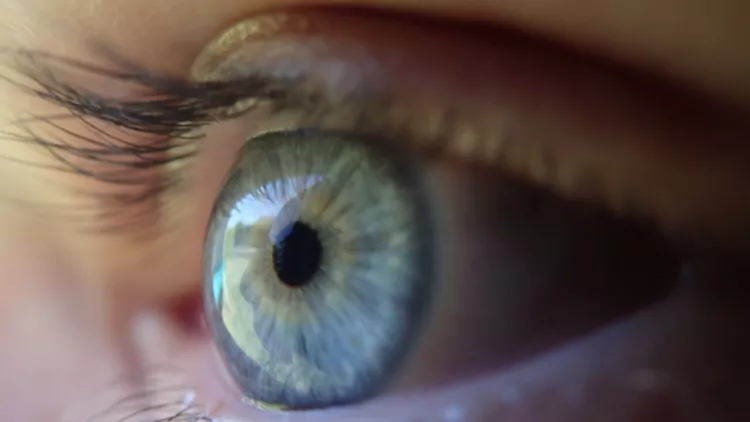Cataract lenses, more commonly known as as intraocular lenses (IOLs), play a crucial role in cataract surgery, providing patients with improved vision after the removal of the cloudy lens. These lenses are designed to replace the natural lens affected by cataracts, restoring clear vision and reducing dependency on glasses or contact lenses.
Intraocular lenses used in cataract surgery come in various types, including monofocal, multifocal, and toric lenses, each offering unique benefits.
Monofocal lenses provide clear vision at a fixed distance, while multifocal lenses enable both near and distance vision, reducing the need for reading glasses. Toric lenses correct astigmatism, enhancing overall visual quality.
During cataract surgery, the surgeon carefully selects the most appropriate lens based on the patient’s individual needs and lifestyle. The use of cataract lenses has revolutionized cataract treatment, allowing individuals to regain clear vision and enjoy a better quality of life.
Here we answer some of the most frequently asked patient questions about cataract lenses.
How does a cataract lens stay in place?
The lens stays in place within the eye through a combination of factors. During cataract surgery, the natural clouded lens is removed, and the IOL is inserted into the lens capsule, which is a thin, transparent membrane that previously held the cataractous lens. The IOL is carefully positioned within this capsule to ensure stability and proper alignment. The capsule’s natural structure helps to hold the IOL securely in place.
In some cases, the surgeon may also use specialized techniques or additional devices, such as sutures or lens haptics, to secure the IOL and prevent any movement. Over time, the natural healing process of the eye further aids in keeping the cataract lens in position. The combination of the lens capsule’s structure, surgical techniques, and the eye’s healing mechanisms work together to ensure the stability and long-term placement of the cataract lens.
What are cataract lenses made of?
Cataract lenses, or intraocular lenses (IOLs), are typically made of biocompatible materials that are safe for implantation in the human eye. The most common materials used for cataract lenses include silicone and acrylic. Silicone lenses are known for their flexibility and durability, allowing for easier folding and insertion through smaller incisions. Acrylic lenses, on the other hand, provide excellent optical clarity and are less prone to developing deposits or clouding over time. Both materials are well-tolerated by the eye and have been extensively tested for their safety and effectiveness.
Some newer types of cataract lenses may also incorporate additional features, such as blue light filtering or specialized coatings to reduce glare and improve contrast. The specific material used for a cataract lens may vary depending on the patient’s needs, surgeon preference, and the lens design.
Which is best lens for cataract surgery?
The choice of the best lens for cataract surgery depends on various factors, including the patient’s individual needs, lifestyle, and visual goals. Different types of lenses offer unique benefits, and the best lens for one person may not be the same for another.
Monofocal lenses are a common choice and provide excellent vision at a fixed distance, usually for distance vision. However, they typically require the use of glasses for near or intermediate vision.
Multifocal lenses offer the advantage of providing clear vision at multiple distances, reducing the need for glasses. They have different zones or rings that allow for both near and distance vision. However, some individuals may experience slight compromises in contrast sensitivity or experience halos or glare around lights.
Toric lenses are specifically designed to correct astigmatism in addition to addressing the cataract. They can come in both monofocal (monofocal toric) and multifocal (multifocal toric) lens forms. Monofocal toric correct distance vision and astigmatism and patients will require near vision spectacles for close work. Multifocal toric correct all distances and astigmatism and aim to give freedom from glasses.
Ultimately, the best lens for cataract surgery is a personalized decision that should be made in consultation with an expert cataract consultant.
At Optegra, when you book a free consultation with one of our surgeons, your visual requirements, lifestyle, and overall eye health will be considered and discussed with you to determine the most suitable lens option for you.

Can a cataract replacement lens be replaced?
Although an extremely rare event a cataract replacement lens can itself be replaced if necessary. While IOLs are designed to be long-lasting, there are instances where the lens may need to be replaced due to various reasons.
One common reason for replacing an IOL is if the lens power needs to be adjusted to address residual refractive errors or to improve vision quality. This can be done through a procedure called IOL exchange, where the existing lens is removed and replaced with a new one that has the desired power.
Another reason for IOL replacement could be in cases where the original lens becomes damaged, dislocated, or if there are complications such as lens opacification (a condition known as posterior capsule opacification) that impairs vision. In these situations, an IOL exchange may be performed to remove the problematic lens and replace it with a new one.
It’s important to consult with an ophthalmologist or eye surgeon if you have concerns about your existing cataract replacement lens, as they can evaluate your specific situation and recommend appropriate treatment options, including IOL replacement if necessary.
Can you see the lens after cataract surgery?
No, after cataract surgery, the lens that is implanted to replace the clouded natural lens is not visible to the naked eye. The intraocular lens (IOL) is positioned inside the eye, specifically within the lens capsule, which is a thin membrane that naturally holds the lens in place. The IOL is typically transparent and integrates with the eye’s structures, making it virtually invisible.
During the healing process after cataract surgery, the eye’s tissues and fluids adapt to the presence of the IOL, and it becomes a permanent part of the eye. The IOL’s purpose is to improve vision by focusing light properly onto the retina, just like the natural lens. It does not obstruct or interfere with vision in any way.
While the IOL itself cannot be seen, its effects are noticeable as it helps restore clear vision and corrects the visual impairment caused by the cataract. It is important to attend follow-up appointments with your ophthalmologist to ensure proper healing and to monitor the condition of the IOL and overall eye health.
Can an artificial lens get a cataract?
No, an artificial lens, also known as an intraocular lens (IOL), cannot develop a cataract. Cataracts occur when the natural lens of the eye becomes cloudy, causing blurred vision. During cataract surgery, the cloudy lens is removed, and an IOL is implanted to replace it. Unlike the natural lens, which is prone to developing cataracts, IOLs are typically made of biocompatible materials that do not undergo the same changes that lead to the formation of cataracts.
However, it is important to note that in some instances posterior capsule opacification (PCO) can occur . PCO occurs when the thin membrane (posterior capsule) that holds the IOL in place becomes cloudy, causing a gradual decrease in vision. This condition can occur months or years after cataract surgery.
If PCO develops, a simple and painless laser procedure called a YAG laser capsulotomy can be performed. During this procedure, the cloudy posterior capsule is rapidly cleared using the laser, allowing light to pass through and restoring clear vision. It is important to address PCO promptly, as it can significantly affect vision quality.
While the IOL itself does not develop a cataract, it is still essential to have regular eye check-ups with your ophthalmologist to monitor the condition of the IOL, assess overall eye health, and address any potential complications.
Do cataract lenses need to be cleaned by the patient?
No, during cataract surgery, the cloudy natural lens is removed, and the IOL is implanted inside the eye. The IOL is designed to remain in place and provide clear vision.
It is crucial to follow the post-operative instructions provided by your surgeon and attend regular follow-up appointments to ensure the health and functionality of the IOL. Your ophthalmologist can guide you on proper care and address any concerns related to your cataract lens.
Can cataracts come back after lens replacement?
No, cataracts cannot come back after lens replacement surgery. This is because the IOL lens that replaces the natural lens is made of materials that do not become cloudy over time.
However, it is possible for some individuals to experience a condition called posterior capsule opacification (PCO) after cataract surgery. PCO occurs when the thin membrane behind the IOL, known as the posterior capsule, becomes cloudy, causing blurred or hazy vision similar to a cataract. PCO can occur months or even years after the initial cataract surgery. This is easily corrected via a simple and painless laser procedure called YAG laser capsulotomy. During this procedure, a laser is used to create an opening in the cloudy posterior capsule, allowing light to pass through and restore clear vision. This treatment effectively addresses PCO, but it is important to note that PCO is not the recurrence of a cataract, but rather a clouding of the capsule itself.
Regular follow-up visits with your ophthalmologist after cataract surgery will help monitor the health of your replaced lens and address any potential complications, including PCO.
Can you feel the lens after cataract surgery?
No, typically you cannot feel the lens after cataract surgery. The IOL lens that replaces the natural one is designed to integrate with the eye’s structures and function similarly to the natural lens, providing clear vision.
The IOL is positioned within the eye, specifically within the lens capsule, a thin membrane that holds the lens in place. It is typically well-tolerated by the eye and does not cause any discomfort or sensation. Once the eye heals after surgery, the IOL becomes a permanent part of the eye, and you should not be able to feel it.
It is important to note that during the immediate post-operative period, you may experience some mild discomfort, dryness, or foreign body sensation, which is common after any eye surgery. However, these symptoms usually subside as the eye heals.
How big is a cataract lens?
The size of a cataract lens, also known as an intraocular lens (IOL), can vary depending on the specific type and design of the lens. Generally, IOLs have a diameter between 10 and 14 millimetres. The overall size of the lens is designed to fit within the lens capsule of the eye, which is the thin membrane that holds the natural lens in place.
IOLs are available in different shapes and profiles to accommodate individual eye characteristics and vision needs. The size of the lens is determined by factors such as the patient’s ocular anatomy, surgeon preference, and the lens design chosen for the specific surgical case.
It’s important to note that the size of the IOL should be chosen by the surgeon based on a variety of factors, including the patient’s eye measurements, corneal curvature, and other considerations. The appropriate size of the IOL is crucial to ensure proper placement and optimal visual outcomes after cataract surgery.

By Author: Amir Hamid
Mr. Amir Hamid is a Clinical Lead for Vision Correction and an expert refractive surgeon, based in London.
Medically Reviewed Date: 17th May 2024
